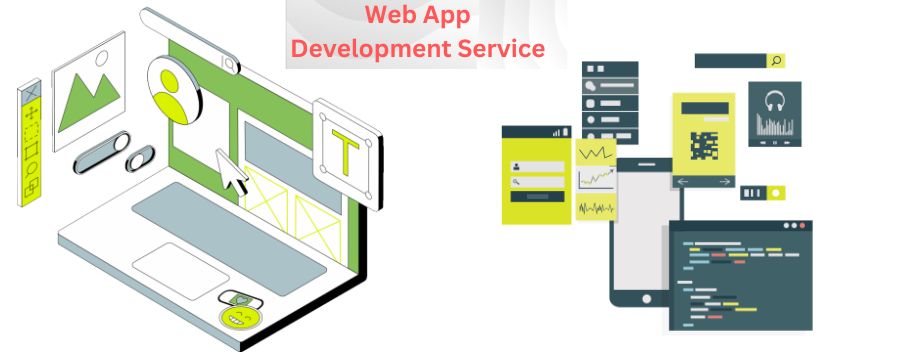
In today's digital world, Most of the businesses want to go beyond the standard website. The development of a custom web app becomes an essential part of online presence and business process streamlining and user experience optimization. Learn everything about custom web application development: Why you need it and how it can transform your company fundamentally.
Custom web application development involves building applications from scratch that are custom made to fulfill specific business requirements. These are not something that is found ready-made on the shelves but rather crafted from the ground up to meet the company's requirement and goals. Custom web application development entails not only functionality improvements but also overall performance enhancement and user satisfaction.
Progressive web applications are one of those areas that comes under the expansive umbrella of web application development. PWAs offer the best from the world of web and mobile applications, promising a unique solution to enhance user engagement. The utilization of PWA-based benefits can be handled by the best progressive web app development company for businesses.
What makes PWAs different?
Responsive Design: PWAs work beautifully on all devices to ensure that the users experience something similar irrespective of whether they are working on their desktop or mobile.
Off-line Capability: PWA can work even without a net connection, therefore allowing some of its features to be available to the user even in case the internet is down.
Fast Loading Times: PWA's due to caching techniques loads extremely fast, which boosts user satisfaction and retention.
App-like Experience: PWAs provide an app-like experience where you get the push notification and home screen with the availability without an app store download.
The success of your custom project would finally be in your choice of a suitable web app development company. The following factors are crucial while making the right choice.
Experience and Expertise: The company should have a history of custom website application development. Its portfolio should reflect the fact that they are experts when it comes to developing quality applications.
Reviews/Comments from Clients: Check reviews and testimonials from previous clients to gather information about the company. There's no one better than satisfied customers to provide reviews.
Technical Skills: These developers should possess great proficiency using the latest tools and programming languages with which the company develops web applications.
Communication: Open and honest communication marks the pathway to success of any project.
Choose a company that believes in honest open communication during the development process.
Support after Launch: True web app development also offers support and maintenance after the finish of the project.
Knowing the process can help guide your expectations and work well with your development team. The main steps involved in custom website application development are:
1. Requirement Analysis
This is the first phase where company needs are identified, objectives outlined and a target is defined. Precise requirement analysis is a foundation of any successful project.
2. Planning and Design
Once the requirements are formulated, a plan on the architecture of the web application is devised. This process includes the creation of wireframes and mockups which set the structure of the app in terms of its layout and functionality.
3. Development
At this point, the developers write down all the code and even build up the application as defined. This is highly crucial to select a capable team that would make use of the newest technologies in web application development.
4. Testing
High-quality assurance is particularly very critical. The app must function right with all or any aspects satisfied. In-depth testing will pick out any problems and rectify the same before it hits the launching room.
5. Deployment
Once the testing is done, it gets deployed into the live environment. It may consist of servers to be built, databases set up, or final fine-tuning.
6. Maintenance and Upgrades
Once successful to deploy into the live environment, it will require constant maintenance so that the application does not come to a complete halt. These will include updates and upgrades based on feedback from users for better performance and security.
Role of User Experience (UX):
Custom website application development considers a lot of importance to UX. A good UX will attract and satisfy the users by keeping them on the application as much as possible without any struggle. Most critical elements of a great UX would include:
Intuitive Navigation : The users should be able to find things easily and instantly. Such an intuitive layout reduces frustration and encourages extended use.
Quick Loading: Application should take lesser time to load so users won't bounce off the site. It is one of the performance-optimizing aspects of web app development.
Accessibility: Ensuring that the application is accessible to everybody including people with disabilities would make it more usable as well as reach out to the audience.
Feedback Mechanism: The integration of user feedback may lead towards further improving continuously, so application evolves with the users.
As the pace of technological advancement rapidly improves, various trends in the future of custom web application development will shine their light to shape it.
1. Artificial Intelligence: AI integration will make it possible for you to provide users with much better experience in form of customized recommendations or even automated responses.
2. Cloud Computing: Using cloud technology provides much better scalability and flexibility compared to the traditional network. It helps to scale resources more effectively.
3. Low-code Development: This helps businesses to develop faster and deploy quicker, which in turn will increase the speed of responding to market demands.
4-Increased Security: Cyber threats are growing. Safety will continue to be the largest influencer in the demand for safe bespoke web app development services.
Bespoke web app development is no more a choice but a requirement for businesses to compete and ultimately succeed in the digitally competitive world. Businesses utilizing the services of a reputable web app development company can develop exactly what they need from such solutions.
Whether it is an emerging progressive web app development or a full-fledged website application development service, let the process and its benefits be known. Strong user experience, source of development, and being ahead of emerging trends all increase the chances of a custom web application from meeting to exceeding the expectations of users.
q1- What is custom web application development?
Ans-Custom web application development is the process of developing a web application whose underlying construction is tailored according to specific needs that a business or organization may require. Custom applications are developed instead of off-the-shelf software purchased off the shelf, with no specific goals, processes, and requirements of the user in mind.
Q2-How is a web application different from a website?
Ans-A website has static information and content, whereas a web application is interactive and dynamic, providing functionality such as forms, portals, or dashboards. The processes and functionality provided by a web app enable its users to perform tasks online.
Q3-Why should business use custom Web Applications rather than out-of-the-box software?
Ans-Custom web applications are developed with the exact requirement of a business. It will lead to better efficiency, scalability, and security. Some of the pre-built solutions might offer generic features that may not appropriately answer the needs of your operations, thereby capping growth potential over time.
Q4. Approximately how long does developing a custom web application take?
Ans-The length of development could vary due to the application's complexity, but 3 to 6 months is for those small to medium projects, while a very complex web application could take up to 12 months or more, starting from the design development, testing, and deployment.
Q5- What is a progressive web app (PWA), and how is that different?
Ans-A progressive web app is also the name of a technique that creates a progressive web application-a type of web application that offers more or less all the benefits of native applications. It supports offline functionality and enables faster page loading, among other things. Its developers can install it directly on mobile devices without using app stores.
 Kanhu Charan Behera
Kanhu Charan Behera
Copyright @2020. All Rights Reserved by WEB DIGITAL MANTRA IT SERVICES PVT LTD
Post Reviews